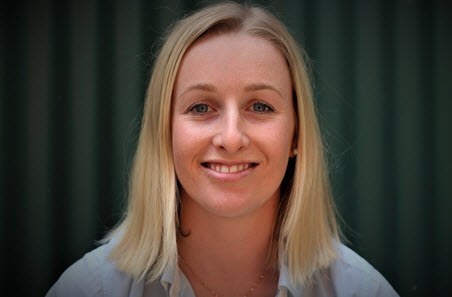Three dry time decisions
21 March 2019
As southern Australia moves from a hot, dry summer into a forecasted dry autumn, it’s time for producers to make critical decisions to safeguard their business.

Industry advisors will hit the road in South Australia this month to deliver ‘It’s ewetime!’ forums, a joint MLA and Australian Wool Innovation initiative, to provide practical tips and tools to implement dry season management strategies.
Hilary Beech, a consultant with Holmes Sackett, will take producers through timely tactical decisions to get through this current dry period.
She said it’s important to look forward rather than focusing on past decisions.
“No decision is wrong if it was made by analysing the data and using all the information available,” Hilary said.
Hilary's top tip is to identify livestock management strategies for three scenarios based off historical pasture growth and rainfall records for your area:
- best case (an autumn break in the next couple of weeks)
- probable scenario (a late autumn break)
- worst case (no useful rain until the spring break).
“This approach gives you three scenarios to proactively respond to how the season is panning out and allows you to assess how your business can respond to risk from different pressure points.”
Hilary said now’s the time to make three key decisions:
1. To feed or sell?
When the numbers are crunched to compare feeding stock against the lost income from selling now and buying stock back at the seasonal break, the economics will most likely show it’s worth feeding.
It’s important to also consider if the business can sustain feeding the flock for this long, not just financially but also from a human perspective (labour and mental wellbeing). It may be necessary to reduce livestock numbers to allocate labour to other critical activities, such as seeding in a mixed enterprise.
2. To join or not?
Although most producers have already joined their sheep, some may still be weighing the soundness of this decision.
Hilary said flock modelling scenarios show it’s profitable to join ewes and feed them, rather than to not join.
“Despite the higher feed demand from pregnant and lactating ewes, the difference in gross margin obtained from joining makes up for supplementary feed costs," she said.
3. To feed for maintenance or production?
If producers decide to feed stock, the next decision is whether to maintain weight or feed for productivity outcomes such as increased conception rates. Hilary said in the current market a general rule of thumb is that it can still be profitable to feed sheep for production gains.
And what if a late autumn break does arrive?
Hilary said it’s important to use feed budgets to ensure pasture is established to a grazing standard before allowing livestock back onto paddocks.
If producers have sold stock only to receive rain in autumn, there are options to help recoup lost income from destocking, such as taking on agistment, buying breeding stock back in, trading livestock or even utilising land to sow a cash crop.
The best option depends on individual business goals. For example, agistment is low risk but low reward, trading stock carries more risk, and cash cropping will incur extra costs when cropped areas are converted back into pasture.
Some useful online tools to guide producers through these decisions are:
- CSIRO’s GrazFeed tool to calculate the daily nutritional requirements of sheep and cattle
- MLA’s feed budget and rotation planner and feed demand calculator Rainfall to Pasture Growth Outlook Tool
- NSW DPI’s feed cost calculator
- Your local animal health/nutrition consultant
More information:
The upcoming South Australian forums are:
- Jamestown: Tuesday, 26 March
- Karoonda: Wednesday, 27 March
- Naracoorte: Thursday, 28 March
NSW forums
- Armidale: Tuesday, 4 April
To find out more and register, visit makingmorefromsheep.com.au/events or call 1800 070 099.


